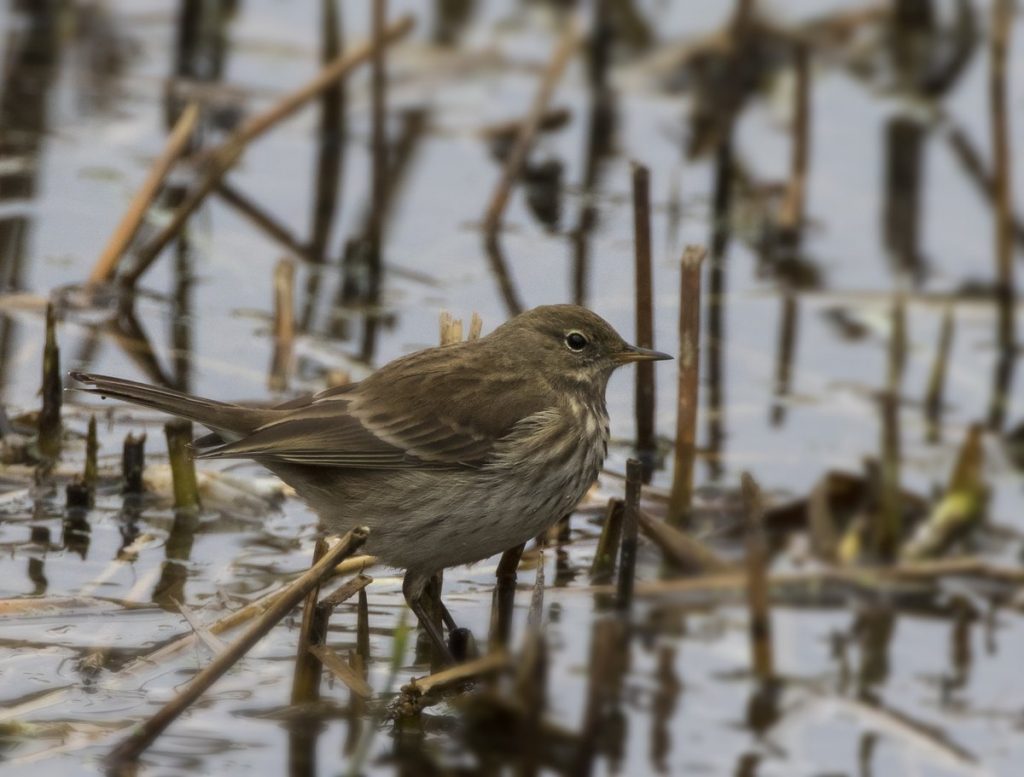
Water Pipits at Rye Meads
Rye Meads is the main location for Water Pipits wintering in Hertfordshire, but they are usually hidden away out in the meadows or over on the sewage works, so an unusually showy individual on the reserve has created quite a bit of interest. Alan Harris explains more about these normally shy birds.
The fact that Water Pipits winter in Britain is rather curious in itself. They breed in alpine meadows in mountainous regions of mid and southern Europe (the Alps, the Pyrenees), and are basically an altitudinal migrant, moving down to lowland freshwater habitats, mainly the Mediterranean and Atlantic coasts of southern Europe to winter. The few (100 or so?) that winter in Britain make a north-west migration, most unusual for a wintering passerine in Europe. The favoured winter habitat in England is freshwater wetlands including cress beds, sewage works and wet coastal pastures and marshes.
At Rye Meads the Water Pipit was an occasional winterer before becoming more regular from the mid-1970s. In the period 1959-2016 there have been approximately 102 individuals spread over 39 winters (68.4% of winters). During the 1990s they reached a peak, at a time when there were large areas of suitable habitat, the sludge drying beds (now gone) and the recently re-profiled lagoons (which were to become the reedbed and scrape which you now see from the Draper hide) being especially favoured. In the peak winter of 1993/94, at least 11 individuals overwintered or passed through on migration. The RMRG made a special effort to study and ring them, and most of what we know about wintering Water Pipits in Britain in winter came from that work, led by Paul Roper. Our work showed most were males (11:4), and our one ringing recovery, the only overseas ringing report known to the BTO, was the re-sighting of a colour ringed bird from the 1995/6 winter in Holland in the October following ringing, suggesting a repeat northwest migration was underway. We also proved that some birds returned to winter with us in following years, up to four winters later.
The Water Pipit was formerly considered a subspecies of the Rock Pipit, but was given full species status in 1986.
The Rock Pipit occasionally occurs at Rye Meads, (around 10 records since 1960, twice overwintering), but usually as a late autumn or, twice, as an early spring passage migrant. Here’s the thing though: the British Rock Pipit is highly sedentary, hardly moving at all from its breeding grounds.
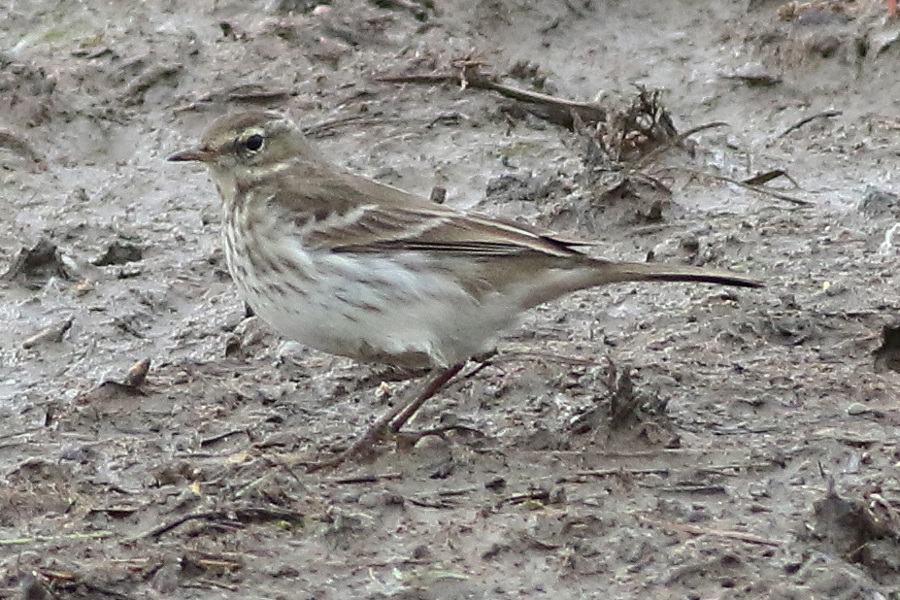
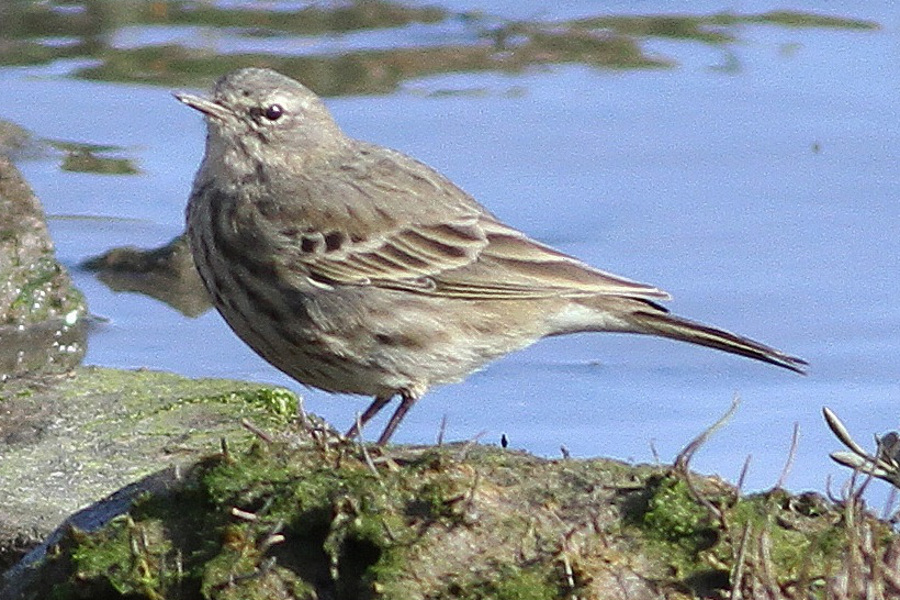
The Rock Pipits occasionally seen in Herts and elsewhere outside the breeding range (like the Essex coast or the Thames estuary) are almost certainly from the Scandinavian migratory populations, littoralis. These birds are often a little paler beneath than British Rock Pipits, cleaner looking and sometimes with hint of a weak supercilium (stripe over the eye) making them look well, yes, more like a Water Pipit. Typically though the main differences are a darker olive-grey appearance, a pale eye ring standing out from the rest of the head, and bold blurry streaking across the breast and flanks. The colour of the outer tail feathers - white in Water, buff-grey in Rock - is, in my experience, impossible to differentiate in the field (but may show up nicely on a well-timed photograph).
The Water Pipit is mainly greyish -brown above and white below, the streaking very diffuse or barely visible above, and dense only on the breast, becoming weak to the flanks. Water Pipits usually show a good clean pale supercilium, extreme examples are reminiscent of the face pattern of a Redwing! Further complications can occur in the late winter or early spring, when Water Pipits (in common with many pipits and wagtails) moult their head and breast. The Water Pipit then turns magically into the most beautiful of birds with a plain peachy coloured breast. Front on, in the sunlight of an April evening it can look like a female Wheatear! The Scandinavian Rock (unlike the British Rock) can also acquire a peachy tint to the breast, but normally retains some breast streaking, so beware those moulting birds.
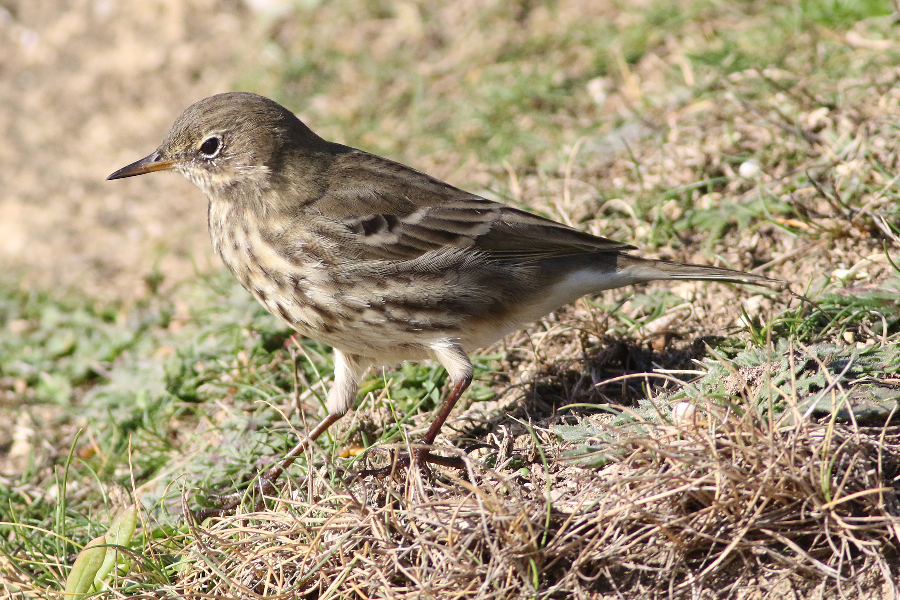
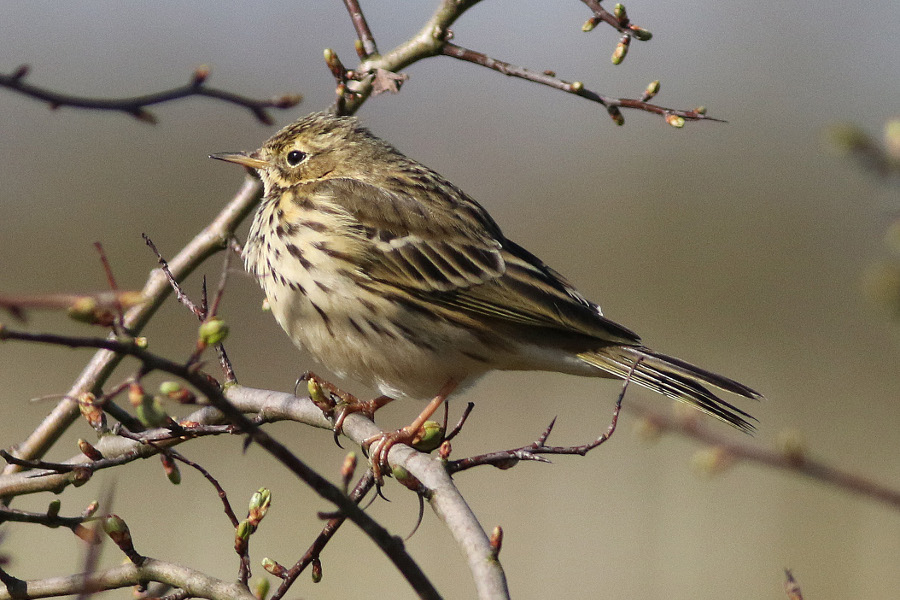
Both differ from the commoner Meadow Pipit in being that bit bigger, having darker maroon to blackish legs (Meadow Pipits are pale orange-pink), whilst the Meadow Pipit is clearly streaked above and altogether more yellowy-olive in colour. The calls are different: both Rock and Water give a strident single call ‘pseep!’, loud, raspy and penetrating, whilst the Meadow Pipit call is a weaker string of (usually) three insipid notes; ‘sip sip sip’.
At Rye Meads in winter the Meadow Pipit, like the Water Pipit, is rarer than formerly, due to a reduction of its favoured habitat. Nowadays a few spend the day on the reserve or on the sewage works, with typically around twenty coming in to roost in the meadows at dusk. Our only clues to their origins is a bird ringed on Fair Isle in September 1979 which was retrapped by RMRG in December of that year, and a December ringed bird which was then found in Germany (668km SE) in the following May.
Further reference:
“The Birds of Rye Meads” (Alan Harris and Paul Roper – RMRG 2005)
“Colour ringing at Rye Meads” (Paul Roper – Rye Meads Ringing Group 14th Report 1995-97).
Many thanks to Alan Reynolds for providing the series of instructive images of pipit species, and to Ravi Prakash Parvatharaju for the photo of the obliging Water Pipit on the Scrape at Rye Meads.
